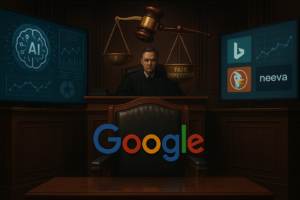Harnessing AI for the Next Breakthrough in Universal Flu Vaccine Development
Influenza, a virus that mutates rapidly and causes seasonal outbreaks, remains a formidable public health challenge. Current flu vaccines must be updated annually to match circulating strains, often leaving gaps in protection. However, the integration of artificial intelligence (AI) into vaccine research offers a transformative approach to tackling this issue by paving the way for a universal flu vaccine—one that could protect against all influenza strains, including potential pandemic threats.
Why a Universal Flu Vaccine is Crucial
- Seasonal Flu Burden:
Each year, seasonal influenza causes millions of cases of severe illness and hundreds of thousands of deaths worldwide. - Pandemic Threats:
Influenza viruses have historically caused devastating pandemics, such as the 1918 Spanish Flu, emphasizing the urgent need for universal protection. - Limitations of Current Vaccines:
- Annual flu vaccines are developed based on predictions of which strains will circulate, leading to variable efficacy.
- They provide limited cross-protection against different or new strains.
A universal flu vaccine aims to offer broad, long-lasting immunity, reducing the need for yearly updates and improving preparedness against emerging strains.
AI’s Role in Vaccine Development
Artificial intelligence, particularly machine learning (ML), is revolutionizing the discovery and design of vaccines by leveraging vast datasets and computational power. Key advancements include:
1. Computationally Optimized Broadly Reactive Antigen (COBRA) Methodology
- How It Works:
COBRA uses AI to identify conserved regions of the influenza virus—stable components that do not change significantly across different strains.
These conserved regions can serve as universal targets for immune response, enabling the design of vaccines that protect against multiple strains simultaneously. - Benefits:
- Pinpoints targets with a higher likelihood of eliciting long-lasting immunity.
- Reduces reliance on time-intensive laboratory experiments.
2. Predicting Immune Responses
- AI models analyze vast datasets of immune responses to existing vaccines and infections.
- By predicting how the immune system will respond to potential vaccine candidates, AI accelerates the testing and optimization process.
3. Streamlining Development Timelines
- Traditional vaccine development often takes years, but AI-driven approaches can compress this timeline.
- During the COVID-19 pandemic, AI helped identify potential vaccine candidates, demonstrating the speed and efficiency of this method.
Breakthroughs in Animal Models
Early studies using AI-designed vaccines have shown promising results in animal models:
- COBRA-based vaccines have demonstrated the ability to neutralize diverse influenza strains.
- Animal studies suggest that these vaccines may offer broader and more durable protection than current seasonal flu shots.
While these findings are encouraging, further testing is needed to determine their safety and efficacy in humans.
Challenges in Translating AI Insights to Human Vaccines
- Complexity of Human Immune Systems:
- While animal models are a good starting point, human immune systems are far more complex and variable.
- AI models must account for these differences to ensure accurate predictions for human responses.
- Data Limitations:
- AI relies on extensive datasets to train models, but data on rare or emerging strains may be limited.
- Ensuring data diversity and quality is critical to avoid biases.
- Regulatory Hurdles:
- AI-designed vaccines must undergo rigorous clinical trials and regulatory review, which can be time-consuming and costly.
- Ethical Considerations:
- The use of AI in vaccine development raises questions about data privacy, informed consent, and equitable access to resulting vaccines.
Future Prospects: AI and Biotechnology Synergy
Despite the challenges, the integration of AI with advanced biotechnologies holds immense promise for revolutionizing vaccine development:
- Accelerated Pandemic Response:
- AI can identify potential pandemic strains and design candidate vaccines in record time, enhancing global preparedness.
- Customizable Vaccines:
- With further advancements, AI could enable the development of personalized vaccines tailored to an individual’s immune profile.
- Global Health Impact:
- A universal flu vaccine could reduce the global disease burden, especially in low-resource settings where access to annual vaccines is limited.
- Broad Applications Beyond Influenza:
- The techniques developed for flu vaccines could be applied to other rapidly mutating viruses, such as HIV, hepatitis C, and coronaviruses.
Conclusion: AI as a Catalyst for Universal Protection
Artificial intelligence is poised to redefine the landscape of vaccine development. By leveraging AI to identify universal targets and optimize vaccine design, researchers are closer than ever to achieving the long-sought goal of a universal flu vaccine.
While significant hurdles remain, the synergy between AI and biotechnology offers unprecedented opportunities to protect humanity from influenza and other viral threats. This breakthrough could herald a new era in public health, transforming our ability to combat infectious diseases and safeguard global populations against future pandemics.


